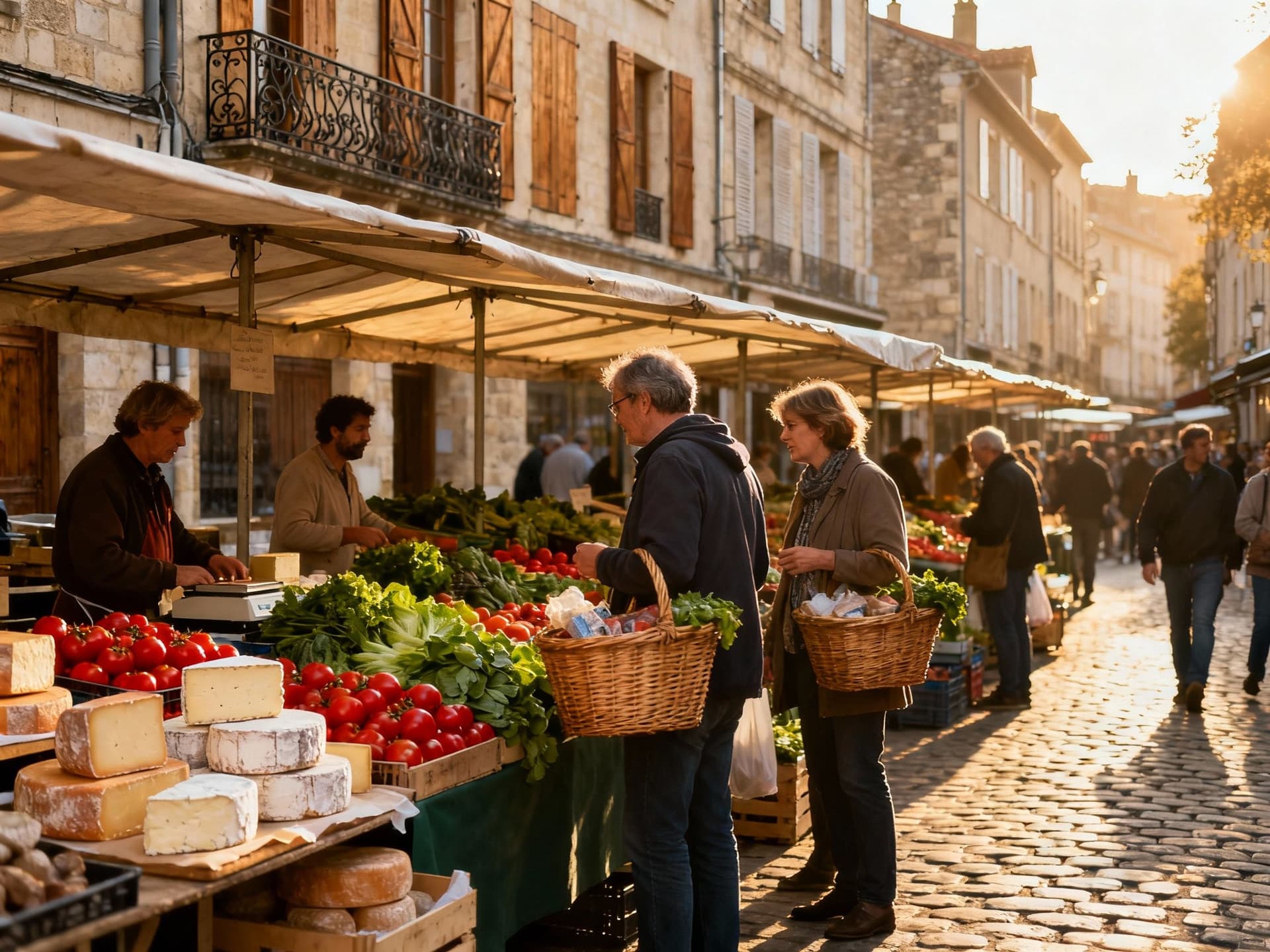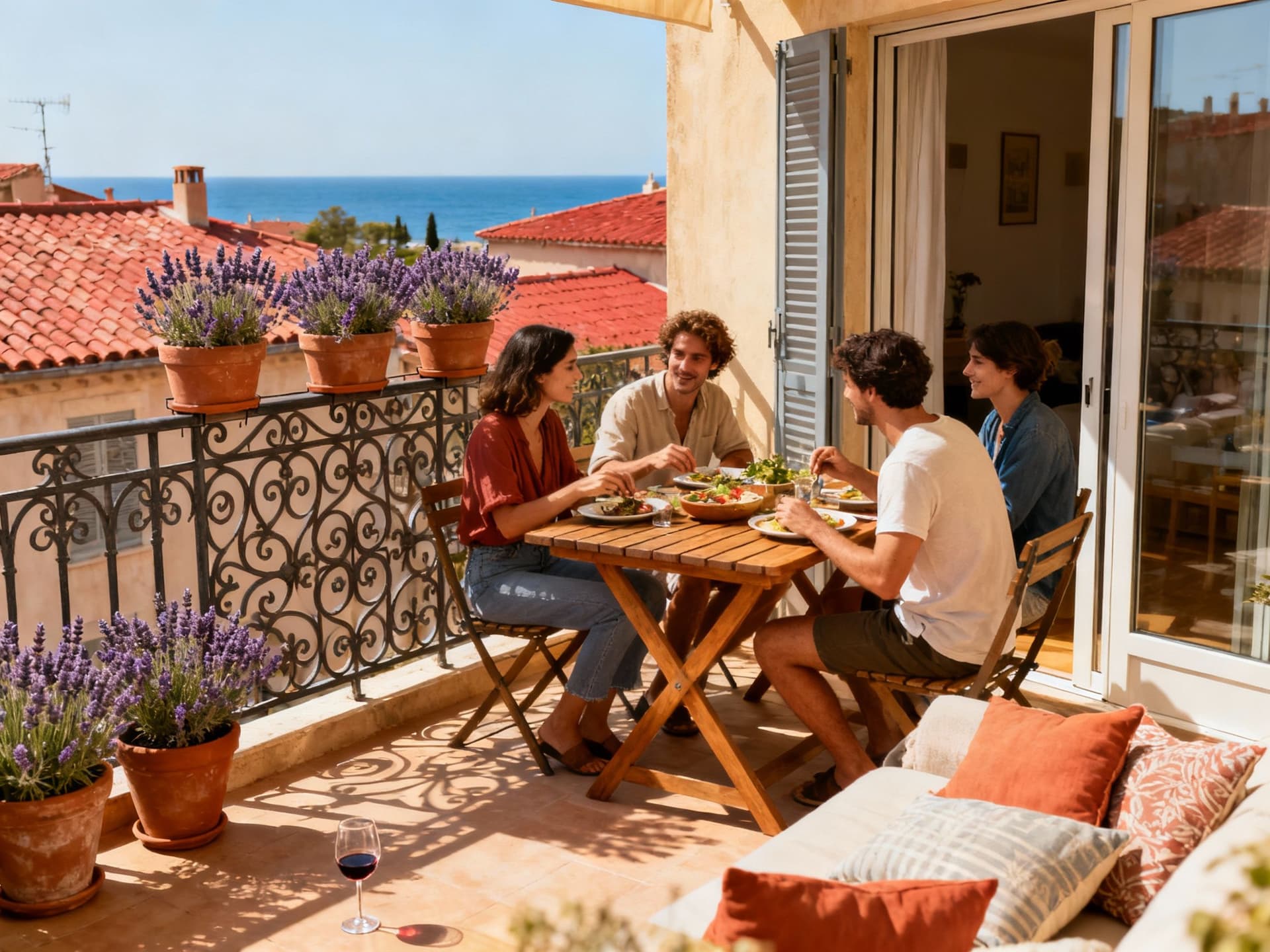France: Lifestyle First, Then Yield‑Smart Buying
Fall in love with France’s daily rhythms — then match neighbourhood character to yields, DPE rules and local tenant demand to turn lifestyle into a disciplined investment.
Imagine starting the day with a demi‑café at a tiled corner café on Rue des Martyrs, then walking three blocks to a covered market for chèvre frais and a crusty baguette — that sensory, slow rhythm is why many of us fall for France. But behind those cobbled streets and boulangeries sits a market that is technical, regulated and incrementally shifting: price stabilisation in 2025, energy‑grade rental bans and diverging yields between Paris, regional cities and resort destinations all change how you should buy.
Living the French Life — what it really feels like

France feels like a set of distinct daily rhythms rather than one uniform lifestyle. Paris is efficient and cafe‑centric, the Mediterranean coast is languid and outdoor‑first, Burgundy smells of wood smoke and market cheese Saturdays, while Alpine towns shift from ski bustle to summer trekking. These lived details shape where tenants want to rent, how seasonal demand behaves and — critically for investors — what tenant profile your property will attract.
Paris: arrondissements, commute and tenant mix
Picture the 9th and 10th: morning espresso, co‑working hubs and students; 16th and 7th: diplomatic households and long‑stay executives. Rental yields compress in central arrondissements (often 2–3% gross) but vacancy stays low for smaller, well‑located units. Recent market data shows asking rents and prime yields differ strongly between Paris and provincial cities — a key reason to match neighbourhood to target tenant, not to romance.
Coast and country: seasonal life, year‑round reality
Nice and the Riviera glitter in summer, but off‑season yields and long‑term rental demand look very different from peak‑season impressions. Inland towns like Nantes, Toulouse and Marseille show stronger gross yield potential (4–5% in some pockets) because prices per square metre are lower while rental demand from students and local workers remains steady. If you crave sun but need cashflow, consider a split strategy: coastal lifestyle for personal time and a yield‑driven unit in a mid‑sized city.
- Lifestyle highlights: markets, cafés and hidden corners
- Rue Cler market, Paris — morning produce stalls and easy tenant appeal
- Cours Julien, Marseille — a creative quarter that rents to students and creatives
- Vieux‑Port to Le Panier strolls — immediate neighbourhood character that boosts long‑let desirability
Making the move: how lifestyle must meet market mechanics

Love for a street should be tempered by paperwork and market reality. France’s buying process is not opaque but it is formal: notaire involvement, registration taxes and clear due diligence steps protect buyers — and add 7–15% to acquisition costs for existing stock. Plan lifestyle choices (neighbourhood, property type) alongside these structural costs and local regulations like the 2025 ban on renting G‑rated energy properties, which immediately affects rental supply and renovation obligations.
Property types: what to buy to match how you want to live
If you want a pied‑à‑terre for weekends, central small apartments deliver lifestyle access but low gross yields. For steady rental income, target 1–2 bed apartments in university cities or peripheral Paris communes where yields can edge above 4%. For seasonal‑heavy investments, Alpine ski resorts and coastal towns offer high headline prices and service‑driven rentals — but expect high maintenance costs and strong seasonality in cashflow.
Working with agencies who know both life and law
A local agency should act like your translator for lifestyle and regulation: they map where neighbourhood character aligns with rental demand, advise on DPE (energy) compliance, and connect you to trusted notaires and gestionnaires (property managers). Choose agencies with demonstrable track records in the micro‑areas you’re targeting — look for recent transaction histories, tenant profiles and transparent fee models rather than gloss.
- Stepwise checklist: blend lifestyle with due diligence
- Visit the neighbourhood multiple times at different hours to confirm the morning, afternoon and evening rhythms match your lifestyle assumption.
- Ask the agent for recent comparable rents, typical tenancy length and local vacancy rates — data, not anecdotes, drive yield calculations.
- Factor renovation and DPE compliance costs into your total purchase budget; an energy upgrade may be required to legally let the property.
- Use a notaire early to understand acquisition costs and tax timing (stamp duty, taxe foncière) so lifestyle decisions aren’t surprised by hidden fees.
Insider knowledge: expat realities and contrarian moves that pay off
Expats often arrive seeking sun or Parisian life and overlook that mid‑sized cities provide a better income profile for investors. Contrarian case: buyers who avoid the Riviera’s pricing mania and place capital into Nantes, Toulouse or Marseille often realise higher gross yields while still enjoying authentic French living. Data shows rents per square metre remain far lower outside Paris, with competitive yields that compensate for fewer lifestyle headline perks.
Cultural signals that change property choices
French social habits — long lunches, strong tenant protections in urban leases and preference for unfurnished long lets — shape what tenants expect and what yield models should assume. Also watch municipal planning: towns that push tourist conversions or luxury resort builds can shift supply rapidly, altering long‑term community cohesion and rental depth.
Long‑term lifestyle and investment tradeoffs
Buying in France is a slow, compound decision: lifestyle wins (markets, cafés, coastline) come with management overhead and regulatory change. If your objective is total return, blend capital appreciation markets (select Paris arrondissements or Alpine resorts for scarcity) with cashflow units in dynamic regional cities. That diversification preserves lifestyle access while balancing yield and liquidity risks.
Inevitably, the French life you fall for needs local technical help to become an investment that performs. Next steps: shortlist three neighbourhoods that match the life you want, request agency‑supplied rent comparables and DPE records, and get a notaire quote for acquisition costs. With those three data points you can convert romance into a disciplined property decision.
Norwegian market analyst who relocated from Oslo to Mallorca in 2016, guiding Northern buyers through regulatory risk, currency hedging, and rentability.


